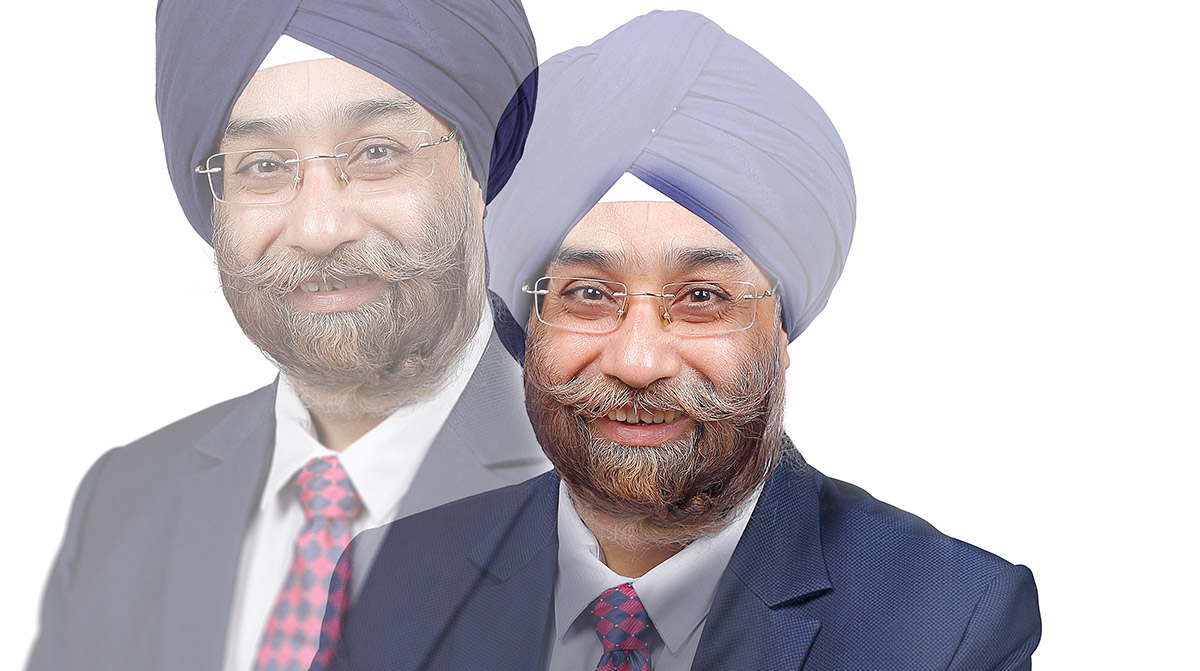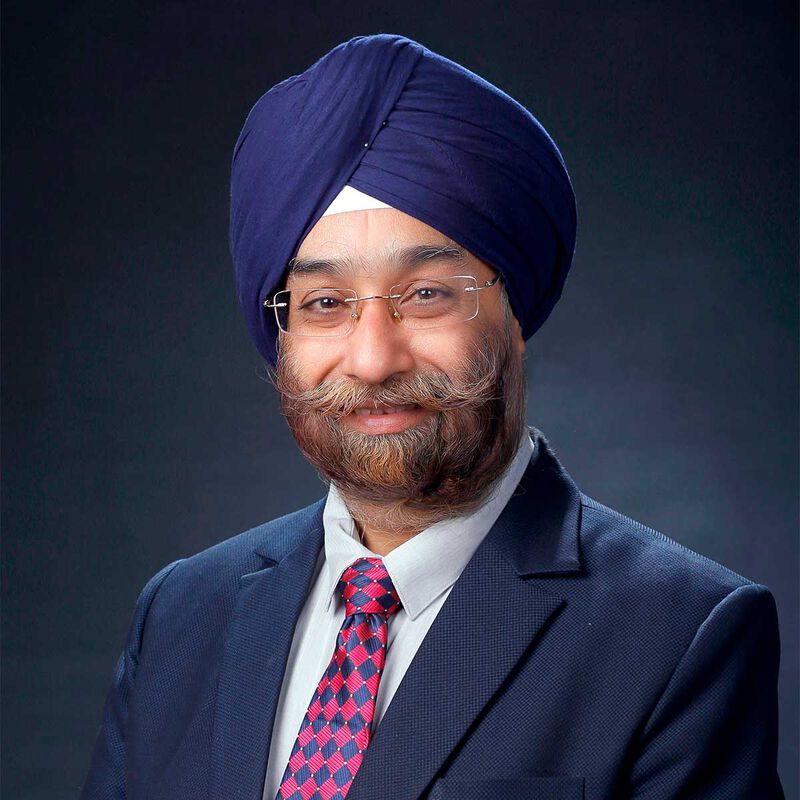GETTING GROWTH IN GRIP

INDIA
Best practice examples from the local client base
By Rajinder Singh, Vice President
In terms of consulting, our root and key focus area in India has been to support the manufacturing industries in the ‘make’ process. We started 20 years ago with programs to support organizations’ operational excellence initiatives inside the boundaries of the factory, and we still do this as a substantial part of our services. Although, we are also working with some of our clients beyond the ‘make’ process to have a positive impact on business across the value chain. Furthermore, we integrate practices like human dynamics and aspects of digitalization and Industry 4.0 into our program. We have worked with clients across industries of automotive, pharmaceuticals, food & beverage, textile, process industries among many others. In future, we would like to expand this into other areas like infrastructure and healthcare. More important than the industry sector, however, are the industrial maturity and transformational goals of our customers - and from this point of view, two types of “business heroes” are important in the Indian market:

We pay close attention to sustaining and
growing the business in our clients’ organizations.
Global heroes
One is the classical global player who has sites or suppliers in India, with very clear specific requirements. Most of our work here is very prescriptive in nature. For example, the local manufacturing objectives and tasks are defined by the Group headquarters from the parent country. Our role here is to deliver exactly the way it is designed and delivered across the world, but in a very localized manner. We make a difference by way of our deep understanding of the local factors, that vary greatly depending on the region of the country, not only in terms of language but also in culture. Nevertheless, the results we deliver must ultimately measure up to anywhere else in the world.
Local heroes
Others are the local players with aspirations to become global. To achieve this, the company must implement systems and practices which are global in nature. It is critical for them to be more efficient, dynamic, and flexible; not just from cost perspective, but creating the right culture, practices and tools that are of world class level.
In terms of the Indian market, we are talking about thousands of companies that are operating at different stages of growth. For example, the more mature ones in discrete and process manufacturing often struggle because of issues concerning business strategy, development, supplier collaborations and risk management, while others still lack on the basic foundations concerning workplace organization and standard operating procedures. Lately, though, many of these companies have realized that to have a grip on growth, operational excellence is the key enabler.
Shaping the OPEX journey
When we started out in India, OPEX did not have the same significance or penetration in many Indian companies as it does in other industrialized countries. So, for a while, we offered a sort of “stand-alone consulting” in the field of operational excellence, basis on specific methodologies or toolsets. The key challenge, however, was not the implementation of improvements; but the “missing link” between the results achieved through improvements and the strategic objectives of the company. We, therefore, made a conscious effort in showing the managers, quickly and transparently, which specific values are generated through OPEX and how to integrate OPEX into the strategic orientation of the company in the long term. The second important aspect was taking the people along during the journey. Mostly, operational excellence consulting has been ignoring the “engagement of employees” and role of leadership, as a central success factor. We made clients understand that only following a set template for improvements is not enough; we also have to involve the leaders and conspicuously take people with us on the journey. Therefore, we attach a lot of importance on the role of leadership, to make sure that people really understand the reason for the change, the strategy that drives it and how they can contribute to the realization of that strategy at every level. The focus has been to create the best processes, whilst also taking the people along; to fulfill the aspirations of the C-level in achieving measurable and sustainable results.
Taking concrete steps towards digitalization
Digitalization in manufacturing has been the talk of the town for a few years now. Though, many large enterprises have taken a big stride towards digitalizing their process and services; the manufacturing industry has been a slow adopter in terms of penetration.
In 2021, EFESO jointly conducted a survey with the Federation of Indian Chambers of Commerce & Industry (FICCI) titled ‘Manufacturing Excellence in India – Current & Future’. More than 120 high level executives and managers across industrial sector and different companies were interviewed. With respect to digitalization, there are two main findings: the penetration of the topic is minute in daily business, in general. It's being driven mostly from bigger companies like component or application providers. Secondly, the persons who are in charge of the digital solutions are not necessarily people who understand its impact in a wider business perspective. Most of these people also do not come from an operational excellence background, making it difficult to make the right choice of technologies and tools required from a manufacturing perspective. Therefore, we insist, to all companies, we have been working with, that it is critical to look at data and data management as the bedrocks for achieving real-time visibility of a business and embarking on a digital transformation to align both process and people.
In a nutshell, we believe in the importance of creating a linkage between strategy and operations with a clear focus on achieving business targets; and that is what we see as the core task for our consulting. Once we put digital along with our traditional methods, it can really accelerate the progress and make big impact on company’s fundamentals for them to remain competitive. It is our firm belief, that this combination of process, people and digital, will help India really become the power it deserves to be in the manufacturing world. India has the strong will from the government, support programs are in place, and the industry size is huge. The trick is to understand the real needs of any company and design a tailored OPEX solutions, together with people and digital. That will be the real boost and recipe for success for both EFESO (in India) and the Indian manufacturing industry.
Persons who are in charge of digital solutions do not necessarily
understand its impact in a wider business perspective.
EFESO reference project from India: Pharmaceutical Group
One of India’s top global players in pharma was under US-FDA (US drug regulator) pressure to meet their specified and (sometime) unspecified requirements and react to observations and warning letters issued by the regulator. On many instances, the company had to stop its business to fix non-compliances thoroughly and without further errors. This is where EFESO came into play to support and to initiate a continuous improvement program with clear focus on meeting or exceeding the FDA expectations.
Challenge
Before the EFESO team started, client production, quality, compliance, and teams from other departments were in reactive modus to FDA requirements and audits. Together with the client’s team, we saw the main challenge in switching that into a proactive behavior.
Success model
We implemented tools and methods that strengthened a proactive organisation to prevent occurrences of instances that results in complaints and FDA warnings. The initial scepticism with respect to FDA approval of this new program, adoption of a OPEX program was quickly overcome, when the measures were implemented in a pilot plant. People soon started to see the benefits and appreciated the results and improvements in the plants and the labs.
Results
Once they started appreciating this, it become as though everybody wanted to do it. And not just to bring the organization etc. up and running, but also to meet expectations from their regulating bodies and authorities and the client. Results included:
- Human error reduction in labs by over 30% through 5S and Poke-Yoke.
- Retrieval time improved by 40% inthe labs through layout changes.
- 30% reduction in breakdown through TPM implementation in utilities.
Find more EFESO case studies.



